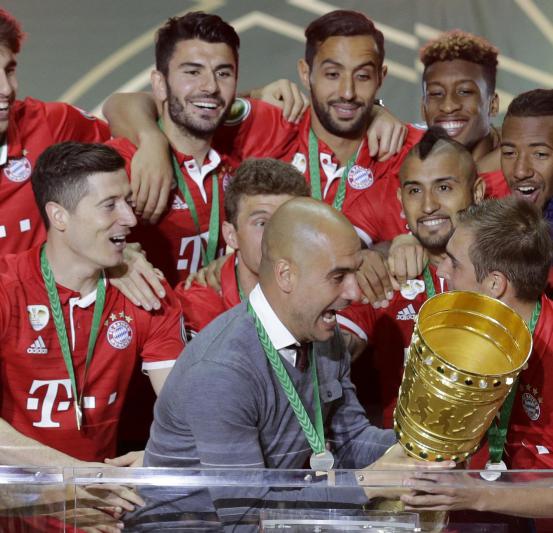- Commissioner’s statement on Ventura, Marte
- Ronnie O’Sullivan: Masters champion ‘felt so vulnerable’ in final
- Arron Fletcher Wins 2017 WSOP International Circuit Marrakech Main Event ($140,224)
- Smith challenges Warner to go big in India
- Moncada No. 1 on MLB Pipeline’s Top 10 2B Prospects list
- Braves land 2 on MLB Pipeline’s Top 10 2B Prospects list
- Kingery makes MLB Pipeline’s Top 10 2B Prospects list
- New Zealand wrap up 2-0 after Bangladesh implosion
- Mathews, Pradeep, Gunathilaka to return to Sri Lanka
- Elliott hopes for rain for Poli
Comparing Pep Guardiola’s First Bayern Munich Side to His Last
- Updated: May 31, 2016

Pep Guardiola’s footballing philosophy is one of the most widely discussed and, at the same time, commonly misunderstood topics in world football.
Although “tiki-taka” is rightly no longer commonly used, the terms “Pep player,” “Pep team,” and “Pep effect” are often thrown around without any clear definitions.
In reality, Guardiola’s footballing philosophy—like that of any coach successful over long periods of time—is something that has proved a bit more fluid. A case study can be seen in the trainer’s tactical evolution during his time at Bayern Munich, contrasting his first season at the Allianz Arena to his third and final campaign in Germany.
In the summer of 2013, Guardiola took the helm of a Bayern team that was probably the most tactically flexible the game had seen in a long time.
Jupp Heynckes’ treble-winners had won the UEFA Champions League using containment, pressing and possession-based methods at different stages.
Their midfield trio of Javi Martinez, Bastian Schweinsteiger and Toni Kroos had all the qualities to defend and attack with devastating effect, or simply to hold the ball. To add a bit more fuel to the forward game, Kroos would be replaced with Thomas Muller, with Arjen Robben taking the Germany international’s spot on the right wing. This central-midfield trio was probably the most important part of the treble-winners.
Yet Guardiola had his own plans.
Despite stating in his first press conference as a Bayern coach (via Goal) that “there (were) very few things to change” with the team he inherited, the former Barcelona man completely revamped the treble-winners to mould them into his own image.
Perhaps it stemmed from an egotistical desire to assert himself as “unique,” perhaps it was just a matter of the trainer resorting to the comfort of what he understood as a coach. Regardless, it became clear early on that his Bayern team would be markedly different from Heynckes’.
Guardiola: “Barcelona players have different qualities to those of Bayern. I need to adjust, the system does not.” http://t.co/ztJ27MCsWB
— Enis Köylü (@eniskoylu) June 24, 2013
In his debut match against Borussia Dortmund in the DFL-Superpokal, Guardiola swapped Heynckes’ 4-2-3-1 formation for the same 4-3-3 he’d used at Barca.
More significantly, the midfield trio consisted of Thiago Alcantara behind Kroos and Muller. Schweinsteiger was benched until the final quarter of the game, and Luiz Gustavo (who normally would have been back-up for an unavailable Martinez in the Heynckes era) didn’t play a minute. Bayern’s midfield lacked balance, and the treble-winners lost 4-2.
His second match, against amateur side Schwarz-Weiss Rehden in the DFB-Pokal, wasn’t exactly a tactical chess match. But again, Guardiola used Muller and Kroos in central midfield with just one …
continue reading in source www.bleacherreport.com
